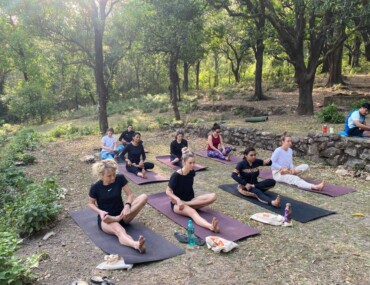In Breathing Exercise, Overworked, under-slept, losing your cool in small arguments which you could have avoided otherwise? Well, it’s pretty normal considering the fast pace of this modern world that we ought to cope with despite our willingness. Yes, we all want to go for never-ending holidays, indulge in yoga retreats, invest in that much needed massage and the list goes on. But the bitter truth is we gotta do, what we gotta do. Life is full of big and small stress that makes it hard to keep your cool. Most stress-provoking situations thankfully aren’t life-threatening, but your body reacts like they are.
While you can’t stop stress from coming your way and zoning out in front of the TV at the end of a stressful day, is not the best solution. And hey! Do not get worked up already if you have been doing this. JUST TAKE A BREATH AND RELAX! Yes, the good ol’ deep breathing practice is the way to go. Let’s get straight to the point.. There are numerous easy breathing exercises and techniques you can do to manage your body’s stress response and blow away them bad feelings. All you need is a pair of healthy lungs, your breath, and 10 minutes or less.
Action Plan:
From the confines of a bed, a desk, or anywhere negativity finds its way, consider these four techniques to help keep calm and carry on.
1. Equal Breathing or ‘Sama Vritti’
Breathing Exercise To start, inhale for a count of four, then exhale for a count of four (all through the nose, which adds a natural resistance to the breath). Got the basic pranayama down? More advanced yogis can aim for six to eight counts per breath with the same goal in mind: Calm the nervous system, increase focus, and reduce stress.
Pro tip: Similar to counting sheep, if you’re having trouble falling asleep, this exercise right before going to bed, can help take your mind off the racing thoughts, or whatever might be distracting you.
2. Alternate Nostril Breathing or ‘Nadi Shodhana’
A yogi’s best friend, this exercise is said to bring calm, balance, and unite the right and left sides of the brain. Starting in a comfortable meditative pose, hold the right thumb over the right nostril and inhale deeply through the left nostril. At the peak of inhalation, close off the left nostril with the ring finger, then exhale through the right nostril. Continue the pattern, inhaling through the right nostril, closing it off with the right thumb, and exhaling through the left nostril. Pro tip: Do this whenever it’s time to focus or energize. Just don’t try this one before bed. Nadi shodhana is said to “clear the channels” and make people feel more awake. It’s almost like a cup of coffee, as they say it.
3. Abdominal Breathing Technique / Breathing Exercise
With one hand on the chest and the other on the belly, take a deep breath in through the nose, ensuring the diaphragm (not the chest) inflates with enough air to create a stretch in the lungs. Do Six to 10 deep, slow breaths per minute for 10 minutes each day to experience immediate reductions to heart rate and blood pressure. Keep at it for six to eight weeks, and those benefits might stick around even longer.
4. Progressive Relaxation
To relieve tension from head to toe, close the eyes and focus on tensing and relaxing each muscle group for two to three seconds each. Start with the feet and toes, then move up to the knees, thighs, glutes, chest, arms, hands, neck, jaw, and eyes—all while maintaining deep, slow breaths. Having trouble staying on track? Specialists suggest we breathe in through the nose, hold for a count of five while the muscles tense, then breathe out through the mouth on release. Pro tip: You can do it at home, on your desk, or even on the road. One word of caution: Dizziness is never the goal. If holding the breath ever feels uncomfortable, tone it down to just a few seconds.
5. Guided Visualization
Head straight for your happy place, no questions asked. With a coach, therapist, or helpful recording as your guide, breathe deeply while focusing on pleasant, positive images to replace any negative thoughts. Guided visualization helps puts you in the place you want to be, rather than letting your mind go to the internal dialogue that is stressful. You can do this pretty much at any place you can safely close your eyes and let go.
Don’t wait until fight-or-flight kicks in before minding the breath. Controlled breathing not only keeps your mind and body functioning, it can also control blood pressure, promote feelings of calm and relaxation, and help you de-stress. And for the yogis amongst us— this can help you find that elusive state of Zen.
While stress, frustration, and other daily setbacks will always be there, the good news is, so will our breath.




